Finding a Truly Friendly Dog: A Trainer’s No-Nonsense Guide
I’ve been a dog trainer for a long time, and I’ve seen it all. From the sweetest little puppies to rescues with some serious baggage. The number one question I get is, “Can you just give me a list of the friendliest dog breeds?” And I get it, that’s what everyone wants. But honestly, it’s not that simple.
In this article
A dog’s personality is a cocktail of genetics, early experiences, and good old-fashioned training. There’s no such thing as a guaranteed “perfect” family dog straight out of the box. But, a dog’s breed is a bit like a blueprint. These breeds were created for specific jobs—herding, retrieving, or just being a really good-looking foot warmer for royalty. Understanding that original job description gives us some fantastic clues about their energy, their social skills, and how they see the world.
So, let’s skip the cute pictures and get real. We’re going to dive into some of the most popular “sociable” breeds, but we’ll look at them through a trainer’s eyes. We’ll talk about what they really need, the common headaches owners face, and—most importantly—the real costs in time and money. My goal is to help you find a dog that actually fits your life, not just one that looks friendly online.

First Things First: Where Does Temperament Even Come From?
Before we get into breeds, let’s quickly cover the basics. A dog’s temperament is a mix of nature (their genetics) and nurture (how they’re raised). Thinking you can ignore one for the other is the first mistake a lot of new owners make. Both are absolutely critical.
A dog’s DNA is its starting point. Companion dogs, like the Cavalier, were bred for generations to be gentle lap dogs. Retrievers were bred to work hand-in-glove with people, so they have a built-in desire to cooperate. This genetic history shapes what a dog finds rewarding. A Beagle gets a real high from tracking a smell, while a Border Collie feels an intense drive to herd anything that moves (including your kids). If you don’t give a working dog a job, trust me, they’ll invent one. That’s when I get the frantic calls about chewed-up drywall and non-stop barking.
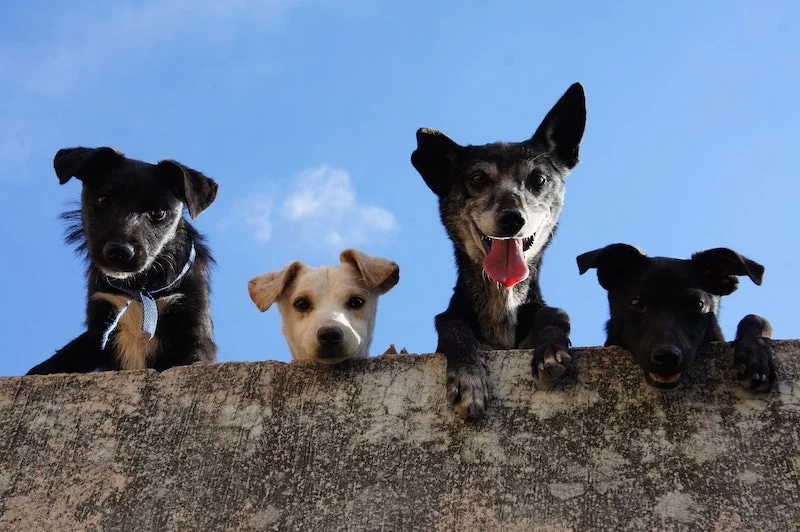
The Magic Window: Your Most Important Job
The most crucial time in any dog’s life is the socialization period, which is a tiny window between about 3 and 16 weeks of age. A puppy’s brain is a sponge, and positive experiences with new people, places, and sounds build a lifetime of confidence. A lack of these experiences? That’s a recipe for fear and anxiety.
I once worked with two Golden Retriever brothers from the same litter. One family took their pup everywhere—to pet-friendly stores, on car rides, and for supervised playdates with vaccinated adult dogs. The other family, terrified of germs, kept their puppy isolated until his shots were done at 16 weeks. The first dog grew up to be a confident, happy-go-lucky guy. The second was scared of his own shadow. Same genes, totally different dogs. That’s how powerful early socialization is.
Good to know: This is a job that starts the day you bring your puppy home. To make this less overwhelming, think of it as a checklist for the first week or two:

- Day 1: Calmly introduce your pup to 3 new people (a mix of men and women, if possible). Let the pup approach them, not the other way around. Keep it short and sweet.
- Day 2: Go for a short walk on two different surfaces, like grass and pavement. Let them sniff and explore.
- Day 3: Turn on the vacuum cleaner in another room while giving your puppy a super high-value treat, like a KONG filled with peanut butter. They learn that the scary noise means good things happen.
- Day 4: Sit on a park bench away from the main action and just let your puppy watch the world go by. Reward them for calm behavior.
- Day 5: Introduce them to a weird object, like an open umbrella on the floor. Let them investigate it on their own terms.
- Day 6: Play a recording of a thunderstorm or fireworks at a very low volume during mealtime.
- Day 7: Take a short car ride to nowhere in particular. End with a fun little play session.
The goal is always to create a positive, happy association. Never, ever force them into a scary situation. That just makes things worse.

A Trainer’s Breakdown of “Friendly” Breeds
Alright, let’s get into the nitty-gritty. Here’s my professional take on a few popular breeds, including the stuff you won’t find on a standard breed profile.
Labrador Retriever
These dogs were originally bred as water dogs for fishermen, helping to retrieve fish and haul nets. This required a gentle mouth, a love for water, and a can-do attitude.
Temperament Deep Dive: The Lab’s friendly reputation is definitely earned. They’re typically outgoing, eager to please, and patient, which makes them relatively easy to train. But that energy is no joke, especially for the first three years. They are bouncy, mouthy, and will chew everything if you don’t give them an outlet.
- A Day in the Life: A happy Lab’s day looks something like this: A 30-minute fetch session in the morning, a puzzle toy with lunch to work their brain, and a 45- to 60-minute walk, run, or swim in the evening. This is non-negotiable. A simple walk around the block will not cut it.
- The Real Cost: A well-bred puppy can cost anywhere from $1,500 to $3,000. Monthly food bills will run you about $70-$100 for a quality brand. Budget for potential health issues like hip dysplasia, which could mean thousands in vet care down the road.
- Heads up! There’s a big difference between American (field) and English (show) Labs. Field Labs are lankier, have way more energy, and need a real job. English Labs are stockier and a bit calmer. Make sure you ask the breeder which type they have!
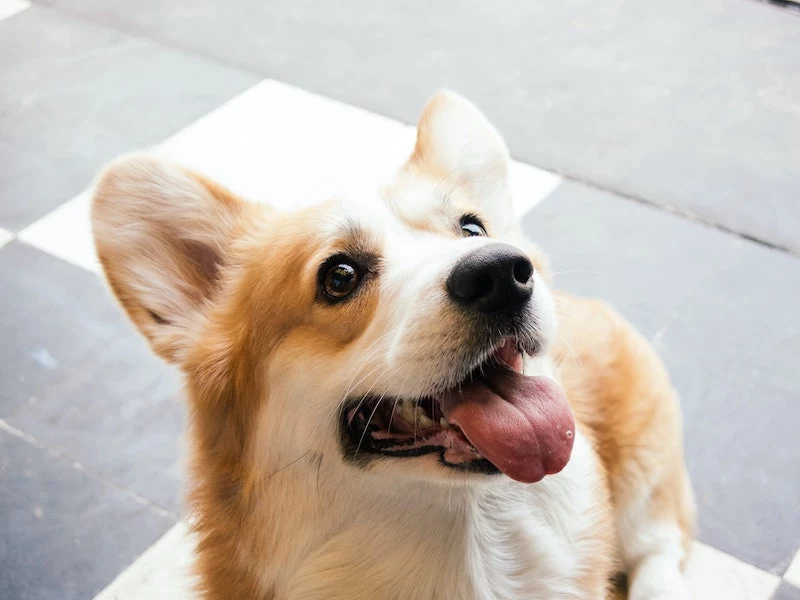
Golden Retriever
Developed as a skilled hunting dog for rugged terrain, the Golden’s job was to retrieve birds from both land and water. This required intelligence, a soft mouth, and a strong work ethic.
Temperament Deep Dive: Goldens are famous for being patient, devoted, and smart. They form incredibly strong bonds with their families, which is wonderful, but can also lead to a condition I call “Velcro Dog Syndrome.” They can be prone to separation anxiety, so it’s crucial to teach them that being alone is okay from a young age.
- A Day in the Life: Very similar to a Lab, they need a solid hour of activity daily. But their intelligence means you have to work their brain, too. I always recommend puzzle toys like a classic KONG, a Nina Ottosson puzzle, or a snuffle mat to prevent them from getting bored and destructive.
- The Time Commitment: That gorgeous coat isn’t self-cleaning! You’re looking at a minimum of 2-3 hours of brushing per week to prevent mats and manage the constant shedding. Be prepared to find golden fur on everything you own.
- The Real Cost: Expect to pay $2,000-$4,000 for a puppy from a breeder who does all the proper health checks. Sadly, this breed has a high rate of cancer. It’s a heartbreaking reality, and prospective owners need to be emotionally and financially prepared for the possibility of expensive treatments. A good pet insurance plan is a must.
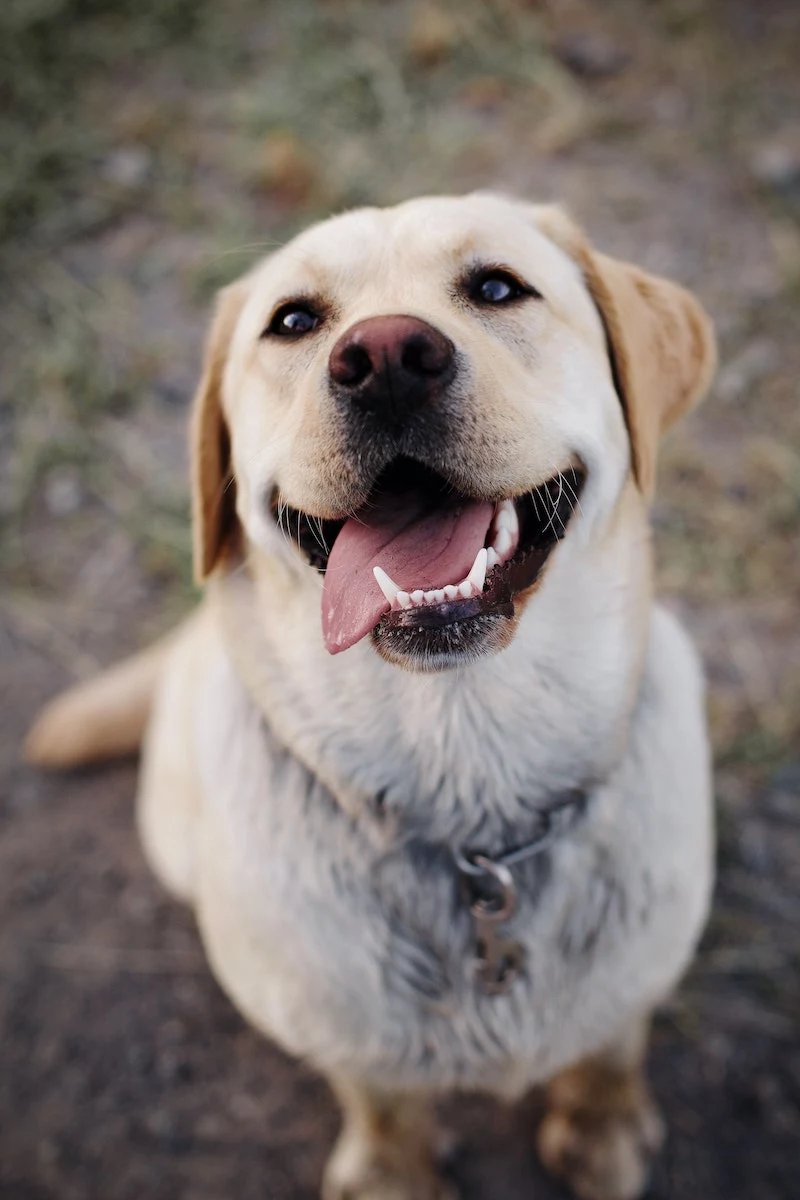
Cavalier King Charles Spaniel
Unlike the retrievers, the Cavalier’s only job was to be a loving and beautiful companion for royalty. They are the quintessential lap dog.
Temperament Deep Dive: These little guys are as sweet as they look. They are incredibly affectionate and live to be with their people. While they are small, they still have that spaniel spirit and enjoy a good walk. They aren’t hyper, but they aren’t couch potatoes either. A couple of moderate walks and some indoor playtime are perfect.
- A Day in the Life: A morning walk around the neighborhood, lots of cuddle time on the sofa, a short training game in the afternoon (they love to please!), and another walk in the evening. Their main job is being your shadow.
- Safety Warning: Their trusting nature is a liability. They will happily run up to any person or dog, having no concept of danger. You have to be their bodyguard. I once consulted on a case where a Cavalier was badly injured by a leashed dog because the owner failed to read the other dog’s
Inspirational Gallery


The Sociable Extrovert vs. The Gentle Giant: It’s not just about being friendly, but what kind of friendly fits your home. A Labrador Retriever’s friendliness is often an invitation to a game—an exuberant, demanding joy that thrives on activity. A Newfoundland, on the other hand, offers a calmer, more stoic companionship. Theirs is a quiet, reassuring presence, a furry anchor in the family chaos. One fills your home with bouncing energy; the other fills it with a profound sense of gentle security. Choose the energy you want to live with every day.
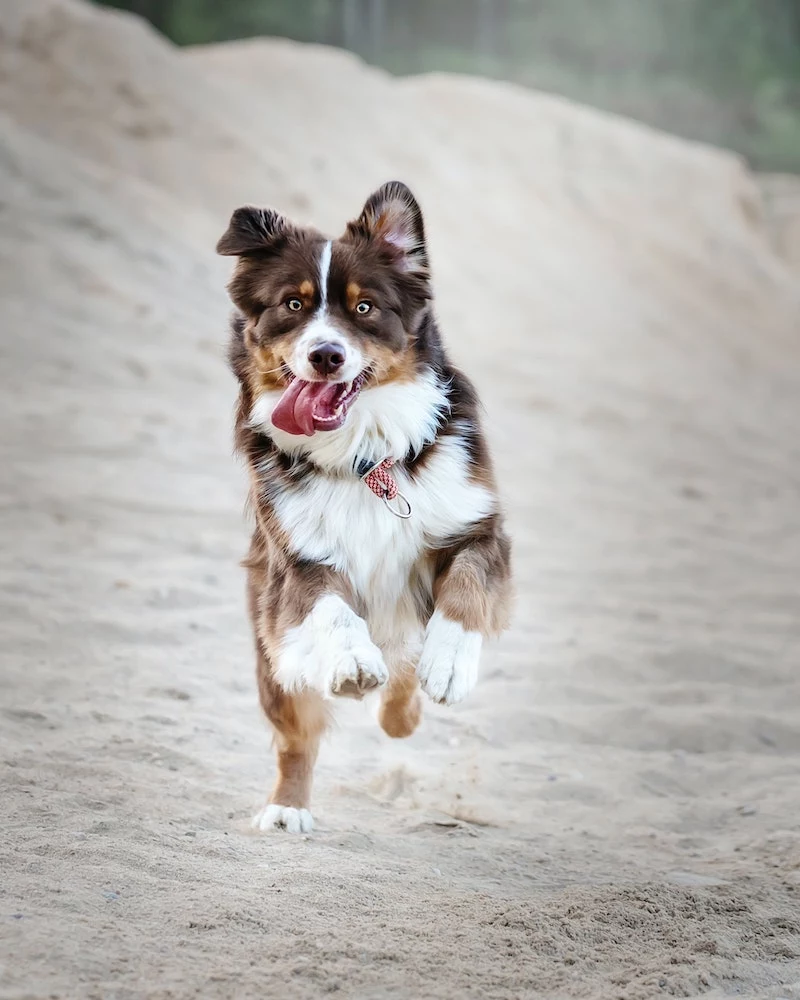
A wagging tail doesn’t always mean a happy dog. The direction, height, and speed of the wag are a complex language. A high, stiff, fast wag can signal agitation or overstimulation, not an invitation to pet.
This insight from canine behaviorists is crucial. Learning to read the whole dog—ears, posture, eyes—is more reliable than focusing on the tail alone. A truly friendly dog offers a relaxed, full-body wag, often with a soft posture and a ‘smiling’ mouth. Misreading the signs is one of the most common paths to an avoidable bite.
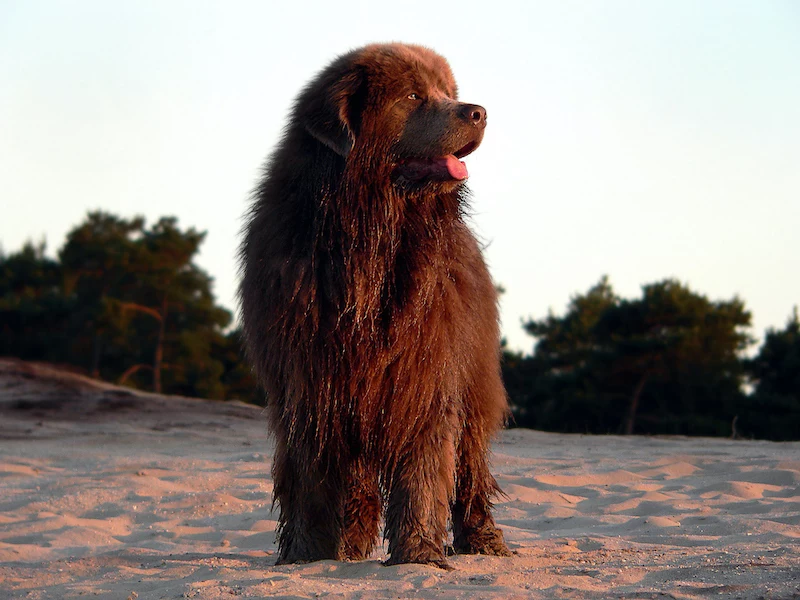
How do you know if a breeder is truly focused on temperament?
A great breeder essentially interviews you. They’ll care more about your lifestyle, home, and experience than your deposit. Ask to see where the puppies are raised—it should be in the home, not a separate kennel, exposing them to daily sights and sounds. They should also be able to speak in detail about early neurological stimulation and socialization protocols they use, like the popular ‘Puppy Culture’ program, designed to create confident, resilient adults. If you can’t meet the mother (and see her calm temperament), walk away.
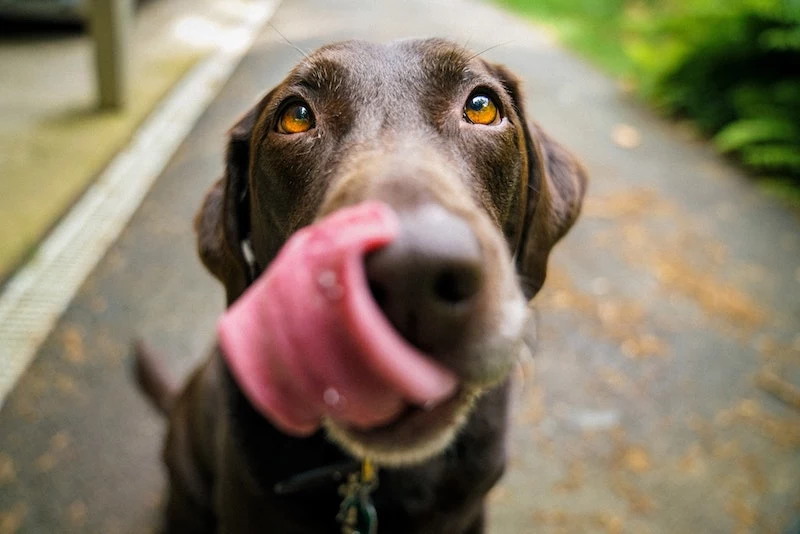
- A dog that greets new people with calm curiosity, not fear.
- A guest who can walk into your home without being jumped on.
- A positive association with strangers that lasts a lifetime.
The secret? The ‘Treat and Retreat’ game. Instead of letting a new person rush in to pet your puppy, have them stand calmly, toss a high-value treat (like a small piece of freeze-dried chicken) past the dog, and then they can take a step back. The puppy learns that strangers make amazing things happen and aren’t a threat. It builds confidence, not anxiety.
Friendly Face, Pricey Problems: Don’t let a sweet face blind you to the budget. The financial commitment varies wildly even between ‘friendly’ breeds.
Boxer: Prone to heart conditions (cardiomyopathy), certain cancers, and hip dysplasia. Their high energy also means higher food costs. Factor in potential thousands for specialist veterinary care over their lifetime.
Cavalier King Charles Spaniel: Adorable, but notoriously predisposed to serious genetic issues like Mitral Valve Disease (MVD) and Syringomyelia (SM). This can mean lifelong medication and expensive annual screenings with a veterinary cardiologist.
A ‘free’ rescue or a ‘cheaper’ puppy can quickly become the most expensive dog you’ll ever own if you’re not prepared for their specific needs.










